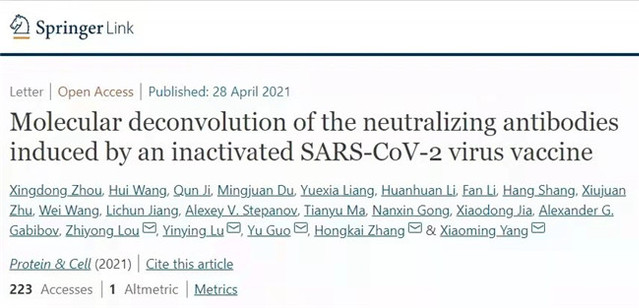
During vaccine development, serological testing is used to verify the immunogenicity of the vaccine and the level of induced neutralizing antibodies. Evaluating the vaccine-induced antibodies at the molecular level helps to better understand the mechanism of the vaccine.
Recently, Nankai University’s research team, together with the counterparts from Beijing Institute of Bioproducts Co., Ltd., Shanghai Institute for Advanced Immunochemical Studies, the Fifth Medical Center of the Chinese People’s Liberation Army, Tsinghua University and the Russian Academy of Sciences, published an article titled “Molecular deconvolution of the neutralizing antibodies induced by an inactivated SARS-CoV-2 virus vaccine” in Protein&Cell.

A schematic diagram of the neutralizing antibodies to the new coronavirus isolated from the blood of vaccinators
The research team established a technology for constructing a natural antibody library based on a microfluidics droplet-based platform, and constructed a natural paired antibody library with the peripheral blood samples of inactivated COVID-19 vaccine recipients, and then used phage display technology to sift multiple new coronavirus neutralizing antibodies, which bind to different epitopes of the spike protein on the surface of the virus. Finally, the research team evaluated the ability of these neutralizing antibodies to bind protein mutants to various surface, including single point mutations, the surface spike proteins of the British mutant and the South African mutant. They found that the antibodies maintained their ability to bind with most of the mutants. Only part of the antibodies has significantly reduced binding ability to the surface spike protein of the South African mutant.
The work has clarified the material basis of the protective effect of inactivated vaccines, and explained the reason why the vaccinators' serum has a neutralizing effect on a variety of new coronavirus mutants, providing an innovative tool for vaccine development and evaluation.
Link: https://link.springer.com/article/10.1007/s13238-021-00840-z